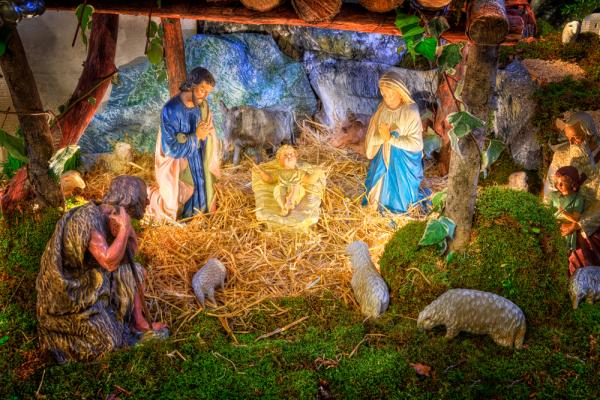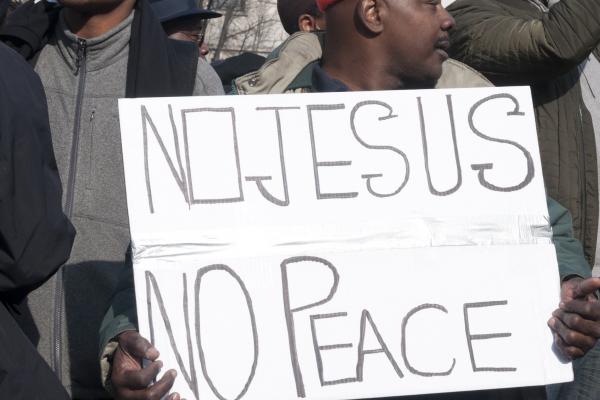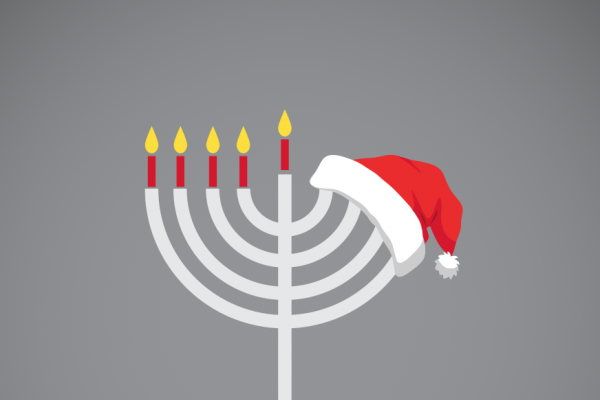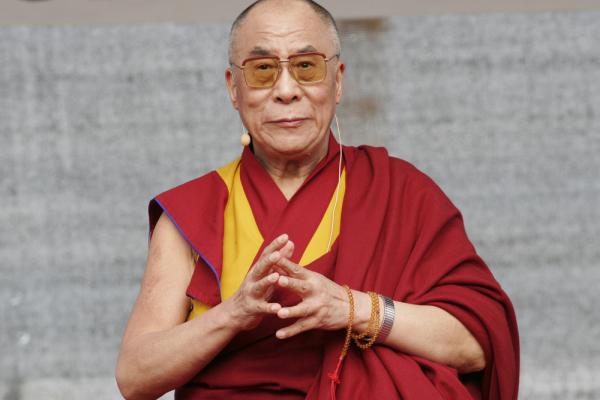The government of Sierra Leone banned public Christmas and New Year’s celebrations because they may exacerbate efforts to eradicate the Ebola virus.
President Ernest Bai Koroma said that despite immense help from the international community, the number of people infected with the virus continues to rise.
Ebola infections in Sierra Leone recently surpassed those of Liberia and Guinea.
“The illness started at the border and now is in the cities and close to 2,000 people have died from the outbreak,” Koroma told reporters. He asked traditional leaders and tribal chiefs to quit performing rituals in hopes that will help curb Ebola.
The majority of Sierra Leone’s 6 million people are Muslim, but Christmas is widely celebrated among the 27 percent of people who are Christian.
Officials said soldiers will be deployed on the streets and people are advised to stay at home with their families.
Since June 18, 2004, the first day U.S. drones killed people in what has been called the U.S. “global war on terror,” people of faith have questioned whether the use of lethal drones is justifiable.
Since then, the CIA has conducted an estimated 400 or more drone strikes in Pakistan, Yemen and Somalia. Drone strikes are continuing in Syria and Iraq. Hundreds of civilians have been killed, according to the Bureau of Investigative Journalism, including women and children.
These “targeted” killings are conducted remotely in countries against which we have not declared war. Lethal drone strikes occur without warning, target for death specific individuals who are secretly selected, and are operated remotely by individuals thousands of miles away.
The U.S. religious community questions the morality of such drone warfare.
Many people of faith who are not pacifists adhere to the “Just War” tradition as enshrined in international law, which assumes that war is always an evil, but that sometimes there is a greater evil that requires military force.
“A time to wait.”
I’ve always struggled with Advent as a time of waiting and awakening. What exactly are we waiting for and what do we need to be awakened to? Are we waiting for the baby Jesus? Is it a sentimental journey of ‘feel good’ when Christmas comes so I can contribute to the treasury of empire? Am I to wake up to some coming event that will happen in the future?
The historical Jesus has already come. God has entered our humanity. St. Paul says that humanity is now God’s temple (1 Cor. 3: 16-17). If we really believe that, are not we — who call ourselves “Christian” after our founder — the incarnation in our time? I think we need to wake up to that reality. As my spiritual mentor Richard Rohr says, following the mystics, “We already are that which we are seeking.”
The Roman Catholic Church in Australia acknowledged that “obligatory celibacy” may have contributed to decades of clerical sexual abuse of children in what may be the first such admission by church officials around the world.
A church advisory group called the Truth, Justice and Healing Council made the startling admission Dec. 12 in a report to the government’s Royal Commission, which is examining thousands of cases of abuse in Australia.
The 44-page report by the council attacked church culture and the impact of what it called “obedience and closed environments” in some religious orders and institutions.
“Church institutions and their leaders, over many decades, seemed to turn a blind eye, either instinctively or deliberately, to the abuse happening within their diocese or religious order, protecting the institution rather than caring for the child,” the report said.
Figures in nativity scenes are pretty weird, aren't they? This is true of most manger scenes, whether we’re talking about the ceramic one under a tree or the statuesque one in a church or the plastic one on a lawn. First off, there’s Mary, always looking very fresh and calm and full of reflection — which is quite impressive considering that she just gave birth without any sedative. Then there’s Joseph, doing some kind of man-thing off to the side — holding a lantern or a large stick. He looks totally composed, too.
And there’s the baby Jesus with a full head of hair, wide-open eyes and arms outstretched like he’s ready to belt out a song.
Not to ruin anyone’s Christmas spirit here, but what the heck?
If our manger scenes were realistic, Mary would be recovering from a painful labor full of sweat and blood, with a look on her face that’s anything but serene. And Joseph — wouldn’t he be a nervous wreck, too? His hand too shaky to hold a lantern?
And about that newborn. Shouldn’t he be red-faced and screaming? Eyes clenched closed and wisps of hair stuck to the top of a head that‘s still odd-shaped from all the squeezing?
Instead, we’ve sanitized and romanticized it. We’ve removed all the blood and sweat and tears and pain and goo. It’s no longer something real. We’ve left out all the messy parts. The oh-my-God-what-now parts. The I’m-screaming-as-loud-as-I-can-because-it-really-hurts parts. The oh-no-I’ve-stepped-in-the-animal-droppings parts.
The real parts.
“Excuse my ignorance, I thought I was a free black man.”
“I’m 11 [years old], I matter.”
“You can choose to look away, but never again can you say you didn’t know.”
“How many times do we have to protest the same [s**t]?”
“White silence is white violence.”
“We have nothing to lose but our chains.”
These signs, and many others, lined the horizon of Pennsylvania Avenue on Saturday in Washington, D.C. In a ‘Justice for All’ march organized by Al Sharpton and the National Action Network, thousands of protesters gathered to protest police actions that have resulted in the deaths of unarmed young black men across the United States.
After marching from Freedom Plaza to the U.S. Capitol, protesters listened to speakers from national racial justice organizations address some of these most recent acts of police brutality.
Al Sharpton sought to draw attention to the diversity present on the streets.
“This is not a black march or a white march. This is an American march for American rights,” he said.
Indeed, the black community was not alone in speaking up against police brutality. One Latina activist encouraged her Latino brothers and sisters to “voice their pain” from police harassment and “come forth and unify with the African American community so we can be strong together.”
“¡Ya Basta!” she concluded. [“Enough is enough!”]
Christians don’t seem to mind that so many beloved Christmas songs were written by Jews — and Jews tend to reel off the list with pride.
"White Christmas." "Let It Snow." "Santa Baby." "I’ll Be Home for Christmas." "Chestnuts Roasting on an Open Fire." "Silver Bells." "Rudolph the Red-Nosed Reindeer."
Those not mentioned here could fill an album.
But why didn’t the Jews write any similarly iconic songs for their holiday that falls around Christmastime — Hanukkah, the Jewish Festival of Lights?
“I Have a Little Dreidl"? Great song … if you’re 4.
There are reasons that Jews are good at Christmas songs and why so many of these songs became so popular. And there are reasons why Jews didn’t write similarly catchy tunes for Hanukkah — or any other Jewish holiday.
But first, a little music history.
The Vatican announced Dec. 11 that Pope Francis will name a new batch of cardinals in February, adding to the select group of churchmen who will someday gather to elect his successor.
Rome won’t reveal the names until next month, but could an American be among them?
There are a number of factors that will govern the choices, and thus the predictions:
First, there are 208 cardinals in the College of Cardinals, but at the age of 80 a cardinal is no longer allowed to vote in a conclave. That leaves 112 cardinals under the age of 80, as of now, though two more will age out in February and another two in March and April.
The customary ceiling on the number of electors today is 120 (it has changed many times over the centuries). That means that Francis could give a so-called red hat to 10 or 12 bishops.
The pope could also raise the ceiling, or ignore it, as Saint John Paul II often did during his long reign.
The Dalai Lama said Dec. 11 that he would not meet Pope Francis while in Rome for a summit of Nobel Peace Prize winners.
“The Vatican administration says it is not possible because it could cause problems,” the Dalai Lama said, hinting that the Vatican may be unwilling to irk China, a country with which it wants to engage and perhaps re-establish diplomatic relations.
But the Vatican’s chief spokesman, the Rev. Federico Lombardi, declined to say whether the pope had personally turned down a request for a meeting with the spiritual leader of the Tibetan Buddhists.
“Pope Francis obviously holds the Dalai Lama in very high regard, but he will not be meeting any of the Nobel laureates,” Lombardi told journalists.
Could it be that the crescendo of dissention is divinely synched to yet again heighten disruptive unease among the status quo? Could it be that the promise of Emmanuel — "God is with us" — as proclaimed by the heavenly host, but feared by powerful elite, is unavoidably linked through the eternal truth — such that even the Church universal cannot celebrate one and avoid the other? Could it be that through Advent, we are called to acknowledge the humanity and parity of personhood, rather than rest in the laurels of privilege? The anger of youthful Ferguson protests was marginalized and dubbed as riots, but could it be that this Advent response manifested in expanded multiethnic solidarity is of divine intent to raise challenge to elitism and to demand respect for people of color as equals rather than as patronized subordinates? Could it be that whether or not the media chooses to ignore the connection, the Advent message for those with ears to hear is that perpetrators of brutality, the comfortable protectors of privilege, and the self-serving pundits of power that tried to nullify the everlasting promise were unsuccessful then and now? Could it be by divine design that unknown names, stolen lives, are now divinely lifted to eternal and global recognition as sacrificial symbols so that truth could come to light?









